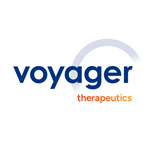Release Details
Voyager Therapeutics Enters Capsid License Agreement and Strategic Collaboration with Novartis to Advance Novel Gene Therapies
- Collaboration with gene therapy leader Novartis aims to discover and develop new approaches for Huntington’s disease and spinal muscular atrophy -
- Voyager to receive up-front consideration of
“We are thrilled to expand our existing relationship with Novartis, a global leader in the gene therapy field,” said
“We look forward to broadening our work with Voyager to help bring forward novel, high-impact gene therapies with the potential to improve the lives of patients affected by severe neurologic conditions,” said
Novartis previously exercised options to license novel capsids generated from Voyager’s TRACER capsid discovery platform for use in gene therapy programs against two undisclosed neurological disease targets.
Collaboration Details and Financial Terms
Under the terms of the agreement, Novartis has agreed to pay Voyager
About the TRACER™ Capsid Discovery Platform
Voyager’s TRACER™ (Tropism Redirection of AAV by Cell-type-specific Expression of RNA) capsid discovery platform is a broadly applicable, RNA-based screening platform that enables rapid discovery of AAV capsids with robust penetration of the blood-brain barrier and enhanced central nervous system (CNS) tropism in multiple species, including non-human primates (NHPs). In preclinical studies, TRACER generated capsids have demonstrated widespread gene expression in the CNS compared to conventional AAV capsids as well as cell- and tissue-specific transduction, including to areas of the brain that have been traditionally difficult to reach, while de-targeting the liver and dorsal root ganglia. As part of its external partnership strategy, Voyager has established multiple collaboration agreements providing access to its next-generation TRACER capsids to potentially enable its partners’ gene therapy programs to treat a variety of diseases.
About Voyager Therapeutics
Forward-Looking Statements
This press release contains forward-looking statements for the purposes of the safe harbor provisions under The Private Securities Litigation Reform Act of 1995 and other federal securities laws. The use of words such as “aims,” “will,” “could,” or “potential,” and other similar expressions are intended to identify forward-looking statements.
For example, all statements Voyager makes regarding the potential for Voyager’s collaboration with Novartis to enable the discovery, development and advancement of important new therapies for patients with spinal muscular atrophy and Huntington’s disease; Voyager’s cash runway and Voyager’s ability to generate sufficient cash resources to enable it to continue its business and operations; the potential of Voyager’s intravenous TRACER capsids to enable high brain penetration, target and de-target certain tissues, and enable next generation gene therapies for diseases of the central nervous system; and Voyager’s ability to modify the course of, and ultimately cure, neurological diseases are forward looking.
All forward-looking statements are based on estimates and assumptions by Voyager’s management that, although Voyager believes such forward-looking statements to be reasonable, are inherently uncertain. All forward-looking statements are subject to risks and uncertainties that may cause actual results to differ materially from those that Voyager expected. Such risks and uncertainties include, among others, the continued development of Voyager’s technology platforms, including Voyager’s TRACER platform and its antibody screening technology; the ability to initiate and conduct preclinical studies in animal models; the development by third parties of capsid identification platforms that may be competitive to Voyager’s TRACER capsid discovery platform; Voyager’s ability to create and protect intellectual property rights associated with the TRACER capsid discovery platform, the capsids identified by the platform, and development candidates for Voyager’s pipeline programs; the initiation, timing, conduct and outcomes of Voyager’s preclinical studies; the possibility or the timing of Voyager’s receipt of program reimbursement, development or commercialization milestones, option exercise, and other payments under Voyager’s current licensing or collaboration agreements; the ability of Voyager to negotiate and complete licensing or collaboration agreements with other parties on terms acceptable to Voyager and the third parties; the ability to attract and retain talented directors, employees, and contractors; and the sufficiency of cash resources to fund its operations and pursue its corporate objectives.
These statements are also subject to a number of material risks and uncertainties that are described in Voyager’s most recent Annual Report on Form 10-K filed with the Securities and Exchange Commission. All information in the press release is as of the date of this press release, and any forward-looking statement speaks only as of the date on which it was made. Voyager undertakes no obligation to publicly update or revise this information or any forward-looking statement, whether as a result of new information, future events or otherwise, except as required by law.
Contacts
Investors
Investors@vygr.com
afunderburk@kendallir.com
Media
tmorrison@vygr.com
prusconi@vergescientific.com

Source: Voyager Therapeutics, Inc.


